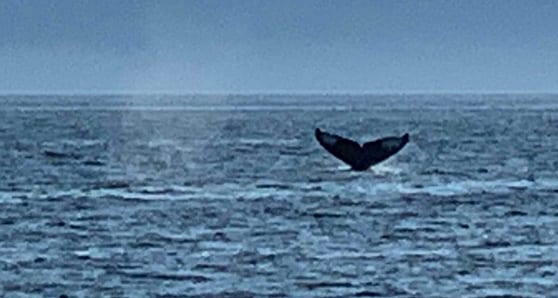 As August turns the corner to September, some notable and familiar signs of change occur at Skelhp, which is known as “The place where the ancients dropped down from the heavens and taught us how to make canoe paddles out of yew wood.”
As August turns the corner to September, some notable and familiar signs of change occur at Skelhp, which is known as “The place where the ancients dropped down from the heavens and taught us how to make canoe paddles out of yew wood.”
The blackberries that have been thriving over the past three weeks start to dry up and wither on their prickle-festooned bushes.
There are still enough berries along our dirt road to pick a bowl for dinner, but you have to know where to look and the berries you pick aren’t as firm as they were in high season. Nevertheless, over half an hour of watchful picking, I’m able to come home to smiles in the kitchen as I show off my harvest. And I’m savouring a bowl of blackberries as I write.
Another indication that the seasons are preparing for change is the ripening crop on our fig tree in the deer-fenced vegetable and flower garden. The green figs are still growing and the real harvest is dependent on another few weeks of hot sun. Some years we get it, some we don’t.
There has already been an early harvest of first-generation figs, starting in mid-August. For some reason, an early tranche of big, red figs appears every year and provides great joy to the resident fig-eaters. But there aren’t many first-generation figs, and they are quickly picked and eaten.
Then the long wait sets in. Some years the wait never ends; some years does – to great joy. We live in a fig-climate cusp zone on the Sunshine Coast.
The largest natural indicators of climate and seasonal shift on our part of the coast are the non-resident whale species, particularly the humpbacks and greys who augur the onset of fall at Skelhp.
Growing up in the 1950s with grandparents who pioneered family camping summers at Wakefield, west of Sechelt, starting in the 1930s, I never heard them speak of those species.
My grandfather, a Scout master who ran Wakefield beach camps with the St. John’s 8th Burnaby Troop for 20 years, was full of stories about “killer whales.” They appeared throughout the summer camping season, usually resulting in the Scouts being called in from rowing and fishing ventures in the waters around the Trail Islands.
My grandfather loved to tell the story of fishing with his two sons, both of whom had hooked a big chinook salmon on their hand-lines at the same time, as the killer whales appeared: “I got out my pocket knife and cut both lines at once, and took the oars to pull for home. Understandably, your father and uncle were not impressed.”
Killer whales have meanwhile become more commonly known as orcas.
And in my adulthood on the Sunshine Coast, humpback and grey whales have more noticeably re-entered the Salish Sea and Inland Passage.
Local experts say that an early local whaling industry began about 1850 and resulted in the resident true whales (the orca is actually more closely related to dolphins) being quickly extirpated by the first decades of the 20th century. Whaling stations were built on Cortes Island and Hornby Island to render blubber into whale oil. Today, only Whaletown village on Cortes Island exists to remind us of the era.
It would appear that the returning humpback and grey whales are members of non-resident southern populations, rediscovering an eco-niche inhabited by their species 100 years ago.
Typically we see our first humpbacks and greys at Skelhp in early September. We saw our first grey at Skelhp this year on Aug. 28. It gently surfaced and rolled in front of our kayaks as we paddled to Scotchfir Point for a picnic. We then watched as its massive back arched and rolled into a deep dive. A few minutes later, it surfaced and blew a spout of fine mist into the morning air.
On that same picnic kayak, we saw a coho salmon jump. Usually by this time we have pink salmon jumping in the bay, but so far this year none have been observed.
I need to stop at the Lang Creek Salmon Spawning Facility on my next trip to town. Soon the creek’s spawning channels will welcome the first of the ultimate fall harbingers – the chinook salmon. Summer is over when they arrive.
Mike Robinson has been CEO of three Canadian NGOs: the Arctic Institute of North America, the Glenbow Museum and the Bill Reid Gallery. Mike has chaired the national boards of Friends of the Earth, the David Suzuki Foundation, and the Canadian Parks and Wilderness Society. In 2004, he became a Member of the Order of Canada.
For interview requests, click here.
The opinions expressed by our columnists and contributors are theirs alone and do not inherently or expressly reflect the views of our publication.
© Troy Media
Troy Media is an editorial content provider to media outlets and its own hosted community news outlets across Canada.





